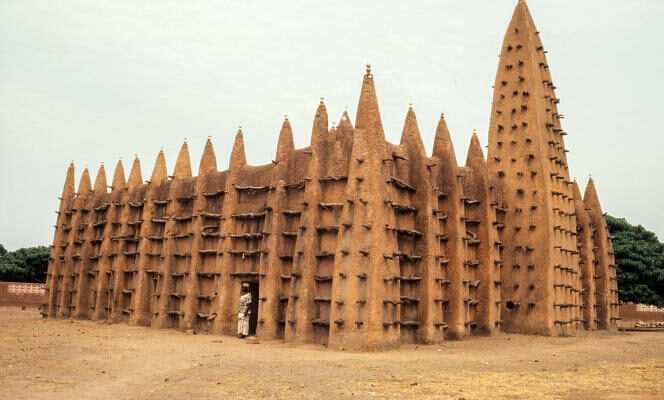Long-term investigations and spectacular fashion series, detailed portraits and good addresses… Every Sunday, find the offbeat look of M The magazine of the World news and style by subscribing to its newsletter.
Appearances can be deceiving. With his straw hat, his orange tank top, his rubber boots and his moped spitting out black smoke, Bafétiguémory has the looks of the cashew, cotton or shea farmers in the area. But it is nothing. He is of the line “of the Konates”, he asserts with authority. A family which, for three centuries, has held the honorary position of niebou, “assistant to the imamate” (in the Malinké language) of the two oldest mosques of Kong, a city located in the north-east of Côte d’Ivoire. True guardian of the place, the last of the Konaté knows every nook and cranny of the Missiriba and the Missiredeni, the great and small mosques. “We are the heirs and defenders of a long history, that of Islam in the land of Côte d’Ivoire”, he professes.
The weight of this history, Bafétiguémory Konaté feels it even more since, in July 2021, Unesco recognized the “outstanding universal value” of these two mosques as well as that of six others, located in the north of the country. Together, these eight places of worship form the second Ivorian cultural site listed as World Heritage after the historic town of Grand-Bassam, the former colonial capital sanctuarized in 2012.
Architectural style born in Mali
Constantly postponed, a celebration of this inscription should be held at the end of February, even if a ministerial reshuffle has so far blocked the calendar of the Ministry of Culture. The Ivorian authorities want to make this “inauguration” the opportunity to give a good image of a region plagued for two years by an increase in attacks attributed to Sahelian jihadist groups. “This is a reason for hope for the North of Côte d’Ivoire, particularly in terms of local development”, assures Anne Lemaistre, head of office and representative of Unesco in Côte d’Ivoire.
At the beginning of the XXand century, the north of the Ivory Coast had about 300 of these Sudanese-type mosques, an architectural style originating in Mali (former French Sudan) and found elsewhere in West Africa. Today, there are only twenty of these raw earth buildings made from banco bricks: a mixture of macerated clay, with straw, rice husks and shea oil.
You have 57.41% of this article left to read. The following is for subscribers only.
